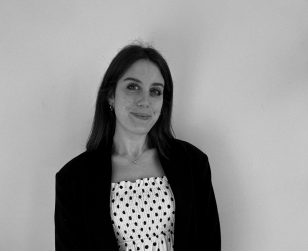UNESCO Chair PhD research

Camille Luna Stella Blavier
38° Ciclo
Dipartimento ABC – Politecnico di Milano
Supervisor: Claudio Del Pero
Tutor: Stefano Della Torre
Adapting Heritage Buildings to Climate Change: A Framework for Risk Assessment and Practical Solutions
This PhD research explores how historic buildings can be protected from the impacts of climate change through practical, site-specific strategies. Based on the principles of Heritage Climatology, the thesis presents a framework that helps conservation professionals assess climate risks and develop tailored adaptive solutions. The framework integrates high-resolution climate data, hazard mapping, and vulnerability analysis to identify current and future risks to building materials and structures. It is validated through a case study of the Tauberhof farmhouse in Trentino–South Tyrol, where projected climate scenarios (RCP 4.5 and 8.5) highlight increasing threats for 6 climate heritage indices out of 7 analysed. Specifically, hazards such as biological growth, lichen decline, wood degradation from fungi and insects, and damage from intense rainfall are expected to worsen, while frost-related impacts are projected to decrease. Designed to be scalable, accessible, and practice-oriented, the methodology broadens the scope of climate risk assessment to include rural and minor heritage buildings, which are often overlooked in such analysis. By bridging science and practice, this work supports the long-term resilience of cultural heritage and promotes the integration of climate expertise into conservation policy and professional practice.
Elenco pubblicazioni con DOI:
- Blavier, C.L.S.; Huerto-Cardenas, H.E.; Aste, N.; Del Pero, C.; Leonforte, F.; Della Torre, S. Adaptive measures for preserving heritage buildings in the face of climate change: A review, Building and Environment, 245, 2023. https://doi.org/10.1016/j.buildenv.2023.110832.
- Huerto-Cardenas, H.E.; Aste, N.; Del Pero, C.; Della Torre, S.; Leonforte, F.; Blavier, C.L.S. Effects of Visitor Influx on the Indoor Climate of the Milan Cathedral. Atmosphere 2023, 14, 743. https://doi.org/10.3390/atmos14040743

Miriam Terzoni
38° Ciclo
Dipartimento ABC – Politecnico di Milano
Supervisor: Nora Lombardini
Tutor: Elisa Boeri
War damages in Peace time
Identification of the parameters used over time in the field of tangible Cultural Heritage conservation and re-construction in war-stricken contexts. In this precise historical moment, the importance of the theme of tangible Cultural Heritage (hereafter CH) conservation, destruction and re-construction in war contexts is clearly visible to the entire world population. We are confronted with the topic of war, which, observing the events that are unfolding in all the countries of the world, where ideological, religious or ethnic conflicts are taking place, is forcing populations to open their eyes to a narrative that is unfortunately still contemporary. In this research, the topic of tangible CH takes into consideration monuments in terms of historic buildings, and historic tangible context that are a collection of architectural heritage. In the aftermath of a catastrophic event, the city (or even the entire Country) and the government must face a considerable problem: what re-build and how to re-build. Those questions lie at the roots of each intervention in post-disaster event, both natural and anthropogenic, relying the choices on historical, socio-economic and political factors of the moment. To answer those problems, it is taken into a deep account the literature already studied about this theme, through a bibliographical research (books, journals) and review of national and international regulations regarding the topic. The methodology develops around the search for parameters and strategies with respect to which the re-construction and/or conservation actions can proceed. To do this, it is useful to analyse what has been done so far, examining emblematic cases and comparing them with each other, finding connections and differences needed to understand what do these interventions look like today, and especially what is their effectiveness. At first, an historical excursus is made in order to understand in general way, both historical and geographical frame, what has happened to date, through an overview of the most emblematic destructions by human hands. Afterwards, the Second World War post quem period is chosen, being the most recent and appropriate to the current situation, during which normative (national and international), technological and methodological basis were formed through which I can interface and conduct research. In order to analyse these parameters within the emblematic cases, it must be firstly understood: when and how do I identify them? What do I want to read through them? Europe (differently from the geographical areas that were under the URSS control, like West Germany) is assumed as example on how it approached the situation, focusing on Italy, France, England and West Germany, which had been the country which benefited the most from the Marshall Plan (1948-1951) set by the Unites States, also known as ERP (European Recovery Program). In this matter, following the already-made researches and studies carried out on the topic by many scholars and architects, the outcomes (and strategies) obtained during the second half of the last century will be critically defined thanks to the definition of parameters with respect to which the re-construction and/or conservation actions has been activated. The parameters are divided by sources (i.e. the socio-economic parameter, which is quantitative, will be different by source by the other parameters, more qualitative). This should also show the capacity of the candidate to manage different kinds of datas, from different origins. The parameters used to proceed with this analysis are:
• Socio-economic and political context of the Country.
• Damage on the asset: was it contained within the asset or extended to its context?
• Conservation: according to the extension of the damage, was/were the remained part/s conserved? On what principles?
• Re-construction: according to the extension of the damage, was/were the remained part/s re-constructed? On what principles?
• Layout: does the final outcome take into consideration the previous layout? How is this accomplished?
• Use destination (function): is the destination the same of the previous one, or has it changed? If no, who decided the new function?
In parallel, pursuing the research started in the first half of the first year, the critical analysis of the international Organisation goes on, to understand what are the strategic lines adopted in case of conflict and how the people and the theme of identity is taken into consideration in the effectiveness of the projects. The data collected from the organisations were then analysed according to two parameters, i.e. prevention and reconstruction, which fall respectively in the pre- and during conflict, and in the post-conflict phases. Once these two criteria were identified, the traced projects were divided according to three macro areas of action:
• Humanitarian aid work.
• Security enhancement efforts.
• Reconstruction interventions.
The final considerations will merge both the identification of the parameters used for conservation and/or re-construction strategies in Europe and the parameters set for the analysis of the main line actions of the international Organisations in conflict situations, to gain the most complete view, trying to understand the criteria of intervention and what they prioritise the most.
Elenco pubblicazioni
- Lombardini, N., Terzoni, M., 2024 “Awareness of context identity for the conservation of Cultural Heritage” in Cardaci, A., Picchio, F., Versaci A. (eds) ReUSO 2024 Documentazione, restauro e rigenerazione sostenibile del patrimonio costruito, Alghero: Publica, pp. 866-875. ISBN 9788899586454
- Lombardini, N., Terzoni, M., 2024 “The role of the authenticity in the post Second World War interventions and regulations in the historical centres: looking for parameters for re-construction” in Caccia Gherardini, S., De Vita,
M. (eds) Restauro Archeologico 1964-2024 La Carta di Venezia. Riflessioni teoriche e prassi operative nel progetto di restauro, Firenze: Firenze University Press, pp. 216-221. - Lombardini, N., Terzoni, M., Velichanskaia, S. 2024 Abstract “Approaching a dissonant element: the case of Former Archaeological Museum in Tbilisi, Georgia” in Ippoliti, A., Svalduz, E. (eds) Beyond the gaze interpreting
and understanding the city. Oltre lo sguardo. Interpretare e comprendere la città XI Congresso AISU / 11th AISU Congress PROCEEDINGS (publication of the full paper is ongoing), pp. 346-347. ISBN 9788831277082

Karolina Pieniążek
38° Ciclo
Dipartimento ABC – Politecnico di Milano
Supervisor: Davide Del Curto
Tutor accademico: Luka Skansi
More than one modernism. Contemporary issues to preserve post-soviet architecture
This research advances the PhD program’s efforts to conserve 20th-century built heritage, recognizing the aging of key Modern Movement works and the unique conservation challenges posed by their innovative construction techniques and materials. It also addresses the theoretical issues raised by 20th-century architecture’s promotion to heritage status, investigating methodological progress in preservation driven by the growing interest in this architectural legacy and the ongoing challenges it faces. The research program seeks to deepen the understanding of modernism’s diverse global manifestations, prompting a conceptual rethinking of its cultural and geographical roots, as well as the contexts in which it emerged and flourished worldwide. Additionally, it explores strategies for preserving 20th-century architecture and protecting this fragile heritage from the numerous risks posed by global discontinuities, where built heritage often occupies a contested space and is vulnerable to conflicting interests. Over recent decades, 20th-century architecture has gained worldwide recognition, leading to significant efforts to safeguard its most renowned masterpieces. The inclusion of modernist works in the UNESCO World Heritage List (WHL) has expanded, particularly following the Global Strategy for a Representative, Balanced, and Credible World Heritage List (1994–2004), which aimed to increase attention to underrepresented and at-risk heritage. Numerous modernist sites have also been nominated for the UNESCO Tentative List, underscoring modernism’s integration into global heritage. However, most inscriptions remain concentrated in Europe and the US, while Asia, Africa, and other regions remain underrepresented. This imbalance paradoxically directs preservation efforts to areas with strong legal frameworks while leaving vulnerable heritage in regions where legal protections remain weak. A notable gap in representation concerns Soviet modernism, which played a crucial role in 20th-century modernization and left a significant architectural legacy across Europe and Asia. Today, many of these modernist structures—particularly those influenced by the late Soviet period—are at risk due to rapid urbanization, economic pressures, weak safeguarding measures, unstable political environments, and social or armed conflicts. In response, this research program will focus on the post-USSR regions of Europe, the Caucasus, the Baltic States, Central Asia, and Africa, addressing the urgent need for their preservation.
Elenco pubblicazioni
- None (although few have been expected to be published soon)
CONTATTI
Politecnico di Milano
Polo Territoriale di Mantova
Piazza Carlo d’Arco, 3, Mantova
0376 317074